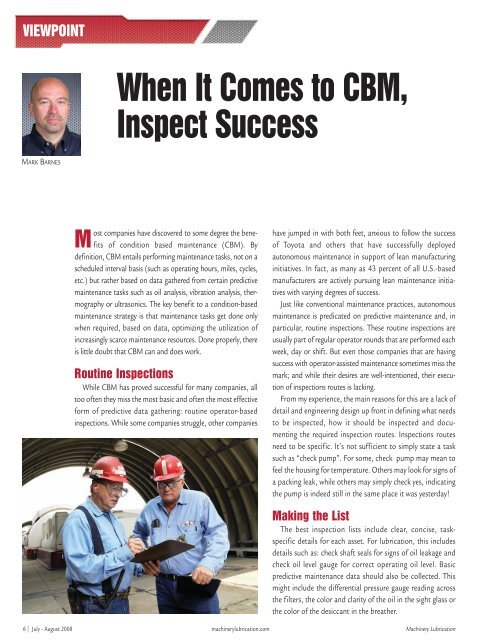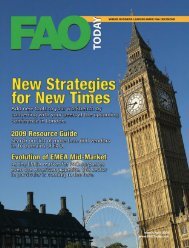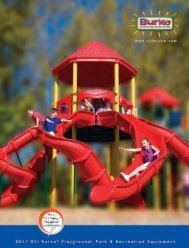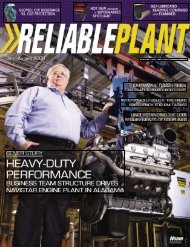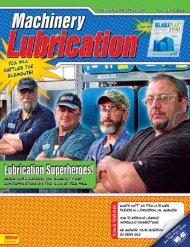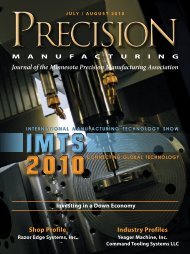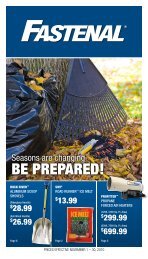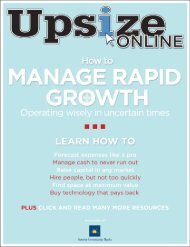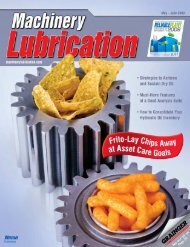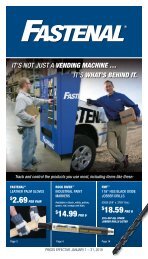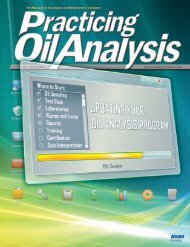Machinery Lubrication July August 2008
Machinery Lubrication July August 2008
Machinery Lubrication July August 2008
Create successful ePaper yourself
Turn your PDF publications into a flip-book with our unique Google optimized e-Paper software.
VIEWPOINT<br />
When It Comes to CBM,<br />
Inspect Success<br />
MARK BARNES<br />
Most companies have discovered to some degree the benefits<br />
of condition based maintenance (CBM). By<br />
definition, CBM entails performing maintenance tasks, not on a<br />
scheduled interval basis (such as operating hours, miles, cycles,<br />
etc.) but rather based on data gathered from certain predictive<br />
maintenance tasks such as oil analysis, vibration analysis, thermography<br />
or ultrasonics. The key benefit to a condition-based<br />
maintenance strategy is that maintenance tasks get done only<br />
when required, based on data, optimizing the utilization of<br />
increasingly scarce maintenance resources. Done properly, there<br />
is little doubt that CBM can and does work.<br />
Routine Inspections<br />
While CBM has proved successful for many companies, all<br />
too often they miss the most basic and often the most effective<br />
form of predictive data gathering: routine operator-based<br />
inspections. While some companies struggle, other companies<br />
have jumped in with both feet, anxious to follow the success<br />
of Toyota and others that have successfully deployed<br />
autonomous maintenance in support of lean manufacturing<br />
initiatives. In fact, as many as 43 percent of all U.S.-based<br />
manufacturers are actively pursuing lean maintenance initiatives<br />
with varying degrees of success.<br />
Just like conventional maintenance practices, autonomous<br />
maintenance is predicated on predictive maintenance and, in<br />
particular, routine inspections. These routine inspections are<br />
usually part of regular operator rounds that are performed each<br />
week, day or shift. But even those companies that are having<br />
success with operator-assisted maintenance sometimes miss the<br />
mark; and while their desires are well-intentioned, their execution<br />
of inspections routes is lacking.<br />
From my experience, the main reasons for this are a lack of<br />
detail and engineering design up front in defining what needs<br />
to be inspected, how it should be inspected and documenting<br />
the required inspection routes. Inspections routes<br />
need to be specific. It’s not sufficient to simply state a task<br />
such as “check pump”. For some, check pump may mean to<br />
feel the housing for temperature. Others may look for signs of<br />
a packing leak, while others may simply check yes, indicating<br />
the pump is indeed still in the same place it was yesterday!<br />
Making the List<br />
The best inspection lists include clear, concise, taskspecific<br />
details for each asset. For lubrication, this includes<br />
details such as: check shaft seals for signs of oil leakage and<br />
check oil level gauge for correct operating oil level. Basic<br />
predictive maintenance data should also be collected. This<br />
might include the differential pressure gauge reading across<br />
the filters, the color and clarity of the oil in the sight glass or<br />
the color of the desiccant in the breather.<br />
6 <strong>July</strong> - <strong>August</strong> <strong>2008</strong> machinerylubrication.com <strong>Machinery</strong> <strong>Lubrication</strong>


